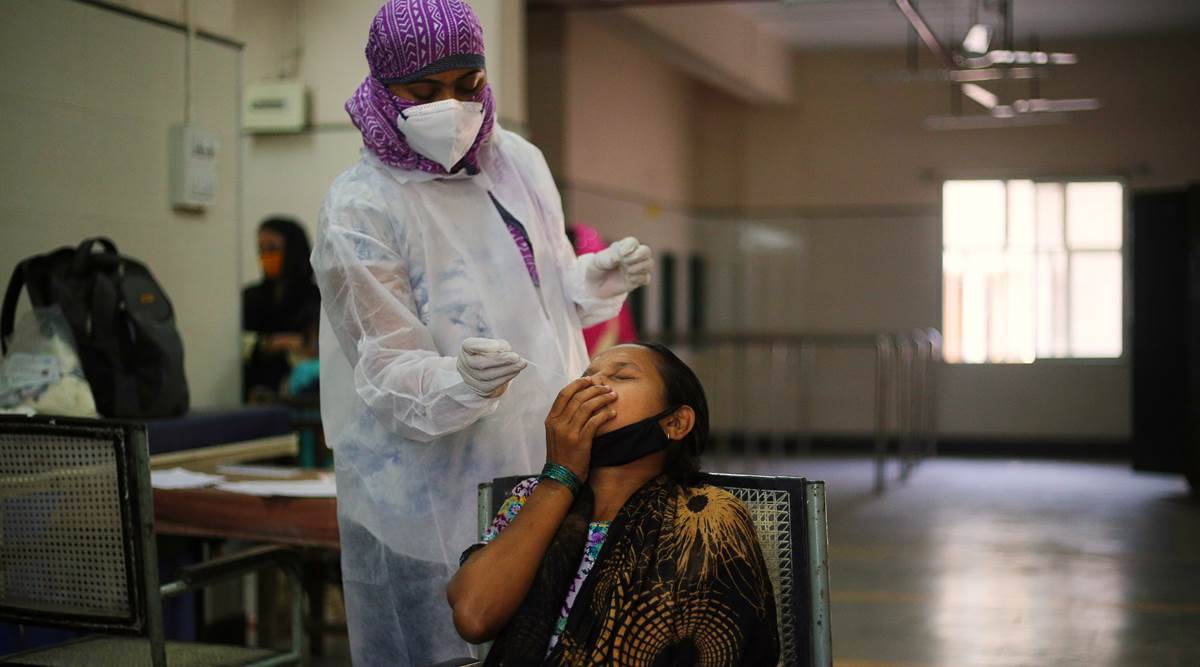Decentralised solutions could reduce burden on laboratories, yield faster results, and early diagnosis.
Written By Neeraj Jain
India is in the middle of a massive second wave of Covid-19 cases, and states are putting in place various lockdown measures again. More than 18 crore vaccine doses have been administered so far. In terms of sheer numbers, this is a creditable figure. But the pace of vaccination is too slow given the challenge of vaccinating more than 1.3 billion people. The possibility of a “herd immunity” threshold being achieved quickly through vaccination is unlikely — for that threshold to be reached, about 60 to 70 per cent of the population must gain immunity either through vaccinations or past exposure to the virus. That requires a very fast pace of inoculation, and equitable availability of vaccines, both of which are difficult objectives. Therefore, we must not lose sight of the other equally vital aspect of anti-Covid strategy: Testing and tracing.
The daily caseload burden of a country should be interpreted in the context of how much of the population is tested — and that needs regular comparative analysis. As experts have noted, only when there is a decline in the number of infected persons detected daily, without a similar decline in daily testing, can we state that the spread of the disease is slowing.
The direct implications of testing remain irrefutable: It helps to slow transmission of the virus when it triggers a contact tracing chain, leading to fewer people falling sick. It also means the virus gets limited scope to mutate into more potent versions. Testing can also lead to a more accurate representation of the scale of infection among people. From a public health perspective, that is an important detail because it helps to inform the resources that would be required to deal with the outbreak — hospital beds, masks, personal protective equipment (PPE) kits, oxygen cylinders.
India has so far tested more than 300 million samples for Covid. We are quite far from testing the majority of our population. Clearly, there is scope for us to push for more and more on testing. However, the approach we take to accelerate on this front is vital and we must consider some key issues.
First, there is a need to decentralise testing processes. Most states, under the guidance of the Union government, are implementing RT-PCR (reverse transcription polymerase chain reaction) tests as the larger proportion of the total tests conducted. This unidimensional approach, coupled with the sharp surge in numbers, has put immense pressure on the RT-PCR laboratories, leading to delayed testing at these labs — as well as delayed reporting of cases. This centralised approach, thus, has created a bottleneck for testing access.
The most sustainable, cost-optimal solution is decentralised testing to ensure decreased load on the RT-PCR laboratories as well as improved turnaround times for reports. This will empower states to adopt newer, more tailored technologies validated by the Indian Council of Medical Research to reinforce testing and tracing. Ultimately, it will facilitate early diagnosis resulting in checking the infection.
Second, there is scope to be open to newer technology, such as the automatic RNA extractor, new-generation rapid antigen kits, and point-of-care molecular testing, as well as rethinking existing technological solutions like the use of cloud pathology and barcoding for lab automation. PATH, for instance, has been demonstrating these cost-effective, sustainable, and scalable testing solution packages in Maharashtra and Punjab, leading to faster turnaround time and reduced burden on the testing laboratories.
It is instructive here to recall one of the earliest addresses by World Health Organisation chief Tedros Adhanom Ghebreyesus, in March last year, where he had a “simple message for all countries… test, test, test”. That message still stands. Prevention, or at the very least grinding the virus’ spread to an eventual halt, could and should be a more viable focus area for now. Only when we strengthen the very armature of our health systems overall, ensuring better and rapid access to diagnosis, can we expect a safer future where we can respond to health crises quickly and effectively.
The writer is Country Director, PATH India
Source: Read Full Article


